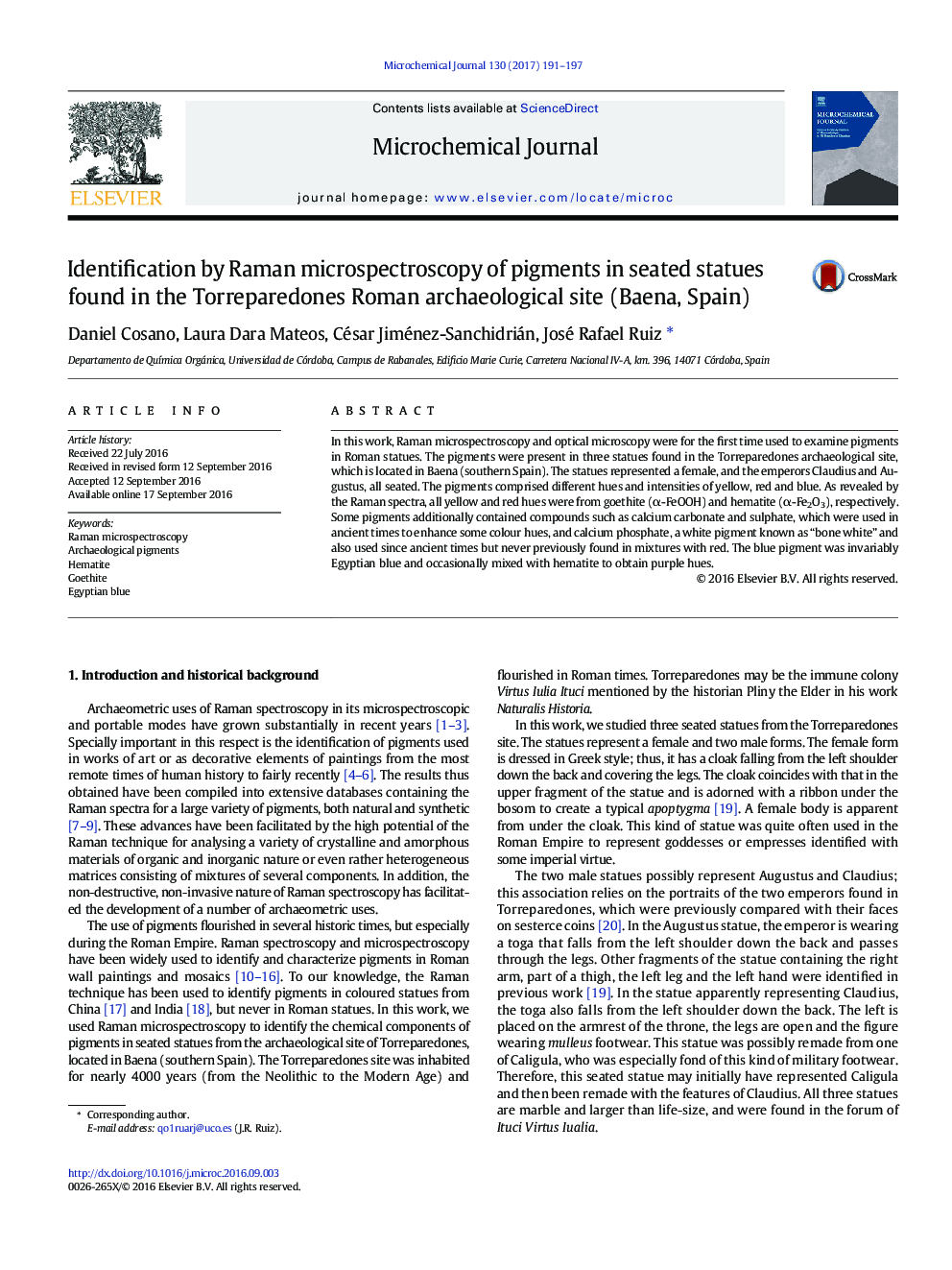| Article ID | Journal | Published Year | Pages | File Type |
|---|---|---|---|---|
| 7641133 | Microchemical Journal | 2017 | 7 Pages |
Abstract
In this work, Raman microspectroscopy and optical microscopy were for the first time used to examine pigments in Roman statues. The pigments were present in three statues found in the Torreparedones archaeological site, which is located in Baena (southern Spain). The statues represented a female, and the emperors Claudius and Augustus, all seated. The pigments comprised different hues and intensities of yellow, red and blue. As revealed by the Raman spectra, all yellow and red hues were from goethite (α-FeOOH) and hematite (α-Fe2O3), respectively. Some pigments additionally contained compounds such as calcium carbonate and sulphate, which were used in ancient times to enhance some colour hues, and calcium phosphate, a white pigment known as “bone white” and also used since ancient times but never previously found in mixtures with red. The blue pigment was invariably Egyptian blue and occasionally mixed with hematite to obtain purple hues.
Related Topics
Physical Sciences and Engineering
Chemistry
Analytical Chemistry
Authors
Daniel Cosano, Laura Dara Mateos, César Jiménez-Sanchidrián, José Rafael Ruiz,
